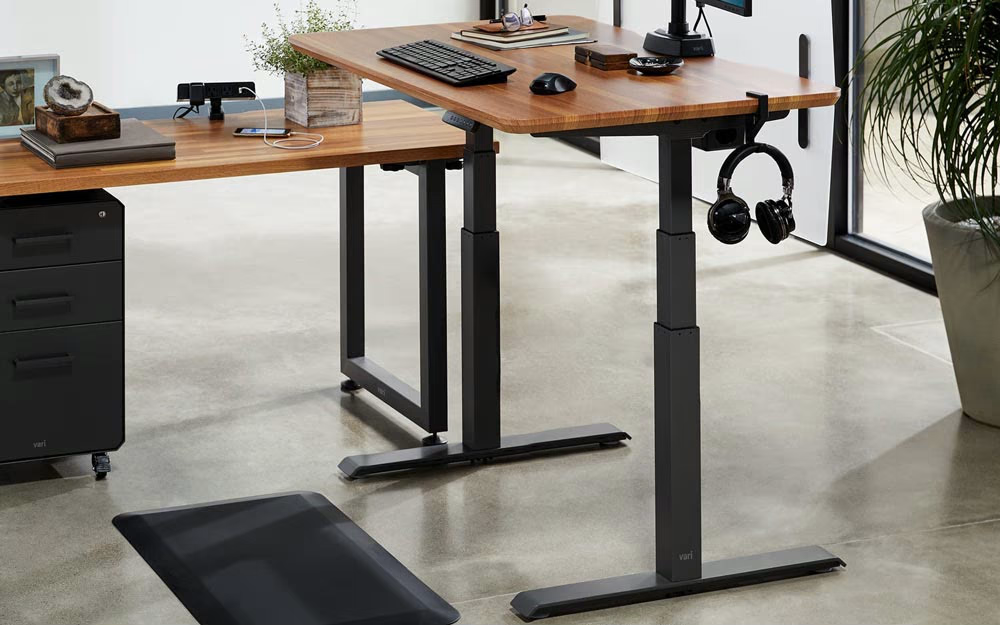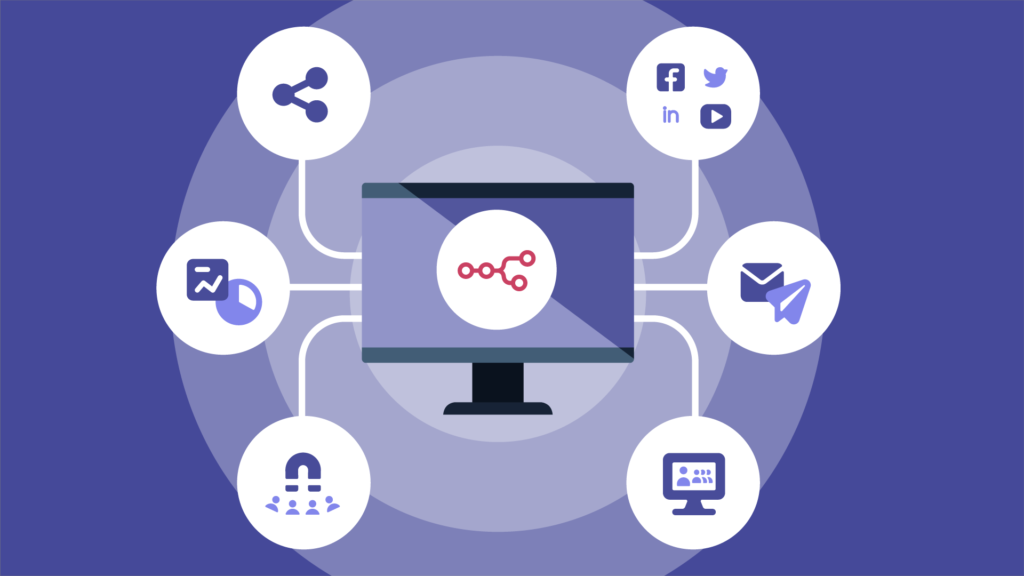Top 7 Productivity Hacks For Designers
Balancing creativity with efficiency is an endless struggle for designers. Finding ways to maximise your productivity so you can get more quality work done in less time is essential. This allows you to take on more projects, grow your business, and avoid burnout. However, with so many potential distractions and the pressure of deadlines, staying focused and optimising workflows is easier said than done.
Implementing certain habits and techniques geared toward the design process can pay huge dividends. Even minor tweaks to your routine can result in gigantic leaps in productivity over the long run. Here, we will explore actionable tips to boost your productivity as a designer.
Table of Contents
Get Organised and Declutter

You can’t work efficiently in a mess. Yet many designers’ workspaces are cluttered with bits and bobs that distract more than inspire. Set aside time for an overhaul to clean up and organise your physical and digital environments.
Tidy Up Your Actual Desk and Surroundings
Start by sorting through the random assortment of things on and around your desk. Toss out anything you don’t need and find homes for those you want to keep. Prioritise keeping only essential tools and inspirational objects within arm’s reach while storing lesser-used items further away.
Aim for a clean desk philosophy to keep surfaces free from clutter while working. This helps you avoid wasting mental energy and time trying to find things buried under stacks of paper, notebooks, and other stuff.
Organise Files and Bookmark Websites
Next, tackle your digital space. Sort through the cluttered mess of images, fonts, templates, and other assets saved on your computer, cloud drives, and bookmarked sites. Delete unused files or those you can easily download again if needed. Then, implement an intuitive folder and tagging system to make current and future files easy to find.
Also, curate your bookmarks, social feeds, and email newsletters. Remove any visual inspiration sites or industry resources you don’t regularly rely on. Then, organise the keeper sites into relevant folders to access helpful references without getting distracted browsing.
Create Daily Rituals That Optimise Conditions for Success
Starting your workday without intention leads to wasted time and reduced efficiency. Implement positive rituals to set yourself up for productivity. Use the first 60-90 minutes of your day to proactively prime your workspace and mindset to facilitate fluid creativity and maximum efficiency later.
Clean Up and Configure Your Workspace
Use the first part of your morning to tidy up your workspace and configure your desktop for the tasks: close unneeded browser tabs and software programs. Clear any new clutter and get your physical space into prime working order. Having an optimised landscape will help concentration.
Consume Inspirational Content and Make a Plan
Spend a few minutes browsing curated newsletters, websites, and design feeds to spark inspiration. Check developer updates for new capabilities. Also, review your project schedules and to-do lists, then define your goals and high-priority tasks for the day. A plan focused on significant picture objectives will make you more effective once you transition to heads-down execution.
Perform Creative Exercises or Techniques
If you have more morning free time, use some of it to activate your creativity through exercises like mindfulness meditation, morning page journaling, quick sketching, or other techniques. Priming your creative juices will allow for more significant innovative thinking than passive consumption alone. Even 10-15 minutes can make a difference.
Optimise Work Sessions for Deep Focus and Make Space for Exploration

The path to better productivity includes concentrated heads-down execution and wandering minds' free time for ideas to percolate. Use project management frameworks to define distinct types of work sessions, then optimise conditions around when you tackle each type.
Use Pomodoro Technique for Intense Focus Sprints
The Pomodoro Technique leverages timed intervals to achieve maximum focus and productivity. This method breaks work down into 25-minute bursts followed by 5-minute breaks. Eliminate distractions during the intense 25-minute sprint, allowing you to tackle tasks requiring deep concentration efficiently, like coding website functionality. Then, fully disengage for 5 minutes to clear your mind before the next burst.
I’ve successfully modified the technique for longer spurts using 45-minute execution intervals followed by 15-minute breaks. This extended duration allows you to get into an even deeper flow. Just be sure you pause and step away in the 15 minutes to rest and recharge.
Have Open Ended Creative Sessions
In contrast to the structured Pomodoro technique, it also incorporates open-ended sessions for free-flowing creativity. Rather than timers and task checklists, have loose sessions to explore new visuals, options, and ideas. Noodle around with various mediums like sketching and collaging without judgment over outcomes. This meandering process allows your subconscious to uncover innovative concepts you’d likely miss in rigid execution mode.
Finding the optimal balance between structure and wandering minds takes experimentation. But investing in heads-down work and unfettered exploration yields exponentially better results than just one.
Embrace Daily and Weekly Planning Cadences
Planning is critical to working smarter, not harder. But exhaustive rigid schedules can sometimes hinder more than help. Instead, implement high-level weekly plans focused on significant picture objectives and tactical daily plans listing your following physical actions. Align daily priorities to drive incremental progress towards weekly goals without getting overwhelmed, detailing every single moment of every day.
Strategise During a Weekly Review
Take time at the end of each week or the start of the next to review the past days’ progress and define targets for the coming week. Celebrate small wins from completed tasks, then process why specific goals remain undone. Assess what worked well versus what hindered productivity. Identify the vital few game-changing subsequent actions to accomplish in the coming days versus the trivial many tasks that only feel urgent and important.
Investing 30-60 minutes every Friday afternoon in this weekly review will yield huge dividends. You’ll start each week proactively rather than just reacting as things come up.
Break Down Goals into the Next Physical Actions
With your weekly plan defined, transition the significant objectives for each day into tangible actions. Ask yourself, “What physical activity can I do to move this forward?” List those as bullet points on that day rather than vague goals like “Work on client report”. Simply getting clear on actual doable tasks for that day focuses your mind. During the day, just tackle one tangible step after another until you achieve the broader goal.
Also, capture random ancillary tasks like “Schedule meeting with the contractor” under their bullet so they don’t distract you from the workflow. Assigning the following physical actions required to progress gives you clarity on what to do next rather than worrying about the enchilada. This facilitates getting started and making consistent progress.
Manage Energy, Not Just Time

Having solid time management skills is essential. But even more critical is actively managing your energy levels. Our mental clarity and motivation fluctuate throughout the day. Identify when you naturally hit peaks and troughs, then align the corresponding activities.
Tackle Tough Tasks During Peak Creative Hours
Use peak hours with the highest mental acuity for intensive creative tasks or solving complex problems. Design work requires lots of decision-making, so make calls during windows where your judgement is sharpest. You’ll work faster with better outcomes than trying to force it when energy drops.
My peak hours are late mornings, from 10 am to 12 pm. Determine when you’re at your best, then guard these productive hours. Say no to meetings or other obligations that hamper leveraging this prime period.
Schedule Tedious or Physical Tasks for Hours
In contrast, align administrative work, email, research, and other mundane tasks when your energy dips later in the day. You’ll still make progress on these less mentally taxing activities without squandering peak productivity times. Straightforward physical jobs without lots of complex judgement calls also tend to be easier to tackle when energy drops, yet the output is still needed.
Planning your schedule around natural energy patterns helps save effort and subpar work. We can push through and force progress even in fatigue states, but the output takes longer and suffers. Making energy management a core part of your work planning processes pays off tremendously over the long haul.
Set Clear Boundaries and Practice Saying No
08Between client demands, internal requests, and self-initiated projects, designers often overload themselves to make everyone else happy. But taking on too many competing priorities at once kills productivity and creativity. Get comfortable setting clear boundaries and saying no so you can focus energy on the vital few game-changing priorities with the highest return and impact.
Limit Overall Work Volume
Carefully evaluate new work inquiries rather than defaulting to an automatic yes to everything. After accounting for existing commitments, quantify how much total time you have available for the coming weeks. Only agree to additional work if it fits within those pre-defined constraints, even if it means turning down potentially profitable projects. It is better to have pockets of margin in your schedule than to overstuff your plate.
Block Time for Strategic Initiatives
Beyond limiting overall volume, proactively block off chunks of time for self-initiated strategy and creative exploration. Many designers allow client deadline-driven requests to consume 100% of their hours. However, investing consistent weekly time towards strategic projects will elevate impact and income over the long run. Just be sure to guard these windows once booked.
Challenge Requests that Derail Focus
Get comfortable pushing back on low-priority random requests from colleagues and clients that hijack focus. Rather than assuming everything asked of you is urgent and essential, politely challenge whether now is the best time. Often, the query can wait until after milestone deadlines pass. Just asking simple clarifying questions can empower the requestor to handle it independently rather than relying on you.
Learning to say no creates space to think, explore, and produce phenomenal creative work. While setting boundaries may seem selfish initially, the enhanced focus ultimately benefits clients through better outcomes. Don’t spread yourself too thin—generate outstanding results on the vital few priorities instead.
Automate Repeated Tasks to Save Time

Even designers doing highly creative work have elements of repetitive tasks. Finding ways to automate these mundane, repetitive steps frees up mental energy and precious time. Look for opportunities to set up templates, leverage integrations, record macros or shortcuts, and auto-fill recurring components.
Build Templates for Recurring Layouts
Rather than starting from complete scratch, craft templates for standard layouts, icons, fonts, colour schemes and other repeat elements unique to your projects. This might include website wireframe kits, branded graphics packages for social media, standard presentation slides, or even email response templates. Invest time upfront to create these reusable frameworks, then simply update the content each time rather than reformatting entirely new pieces.
Connect Frequently Used Programs
You likely juggle various programs for design work, file storage, communication, and task management. Connect accounts into an integrated ecosystem using Zapier or IFTTT. This allows you to save steps executing repetitive tasks like transferring finalised files to cloud storage or adding project due dates from email to your calendar. The minutes held on mundane tasks add up.
Record Macros for Multi-Step Processes
Design work involves some complex software programs. Identify repetitive sequences within those tools, then record macros to automate those clicks. This might standardise commonly used effects in Photoshop or streamline source file importing in InDesign. Even eliminating a few manual clicks each time through a multi-step process yields significant time savings over months.
While automating everything can risk feeling repetitive, identifying selective high-payoff areas to systematise gives you the capacity to maintain innovation elsewhere. Target your work's inefficient, repetitive elements first when seeking automation wins.
Final Thoughts
These productivity hacks allow designers to get more high-quality work done in less time, ultimately enhancing creative flexibility and satisfaction. However, finding optimal efficiency requires intention and some trial and error. Not all hacks work for all people. Focus first on changes that create structure while still supporting wandering creative discovery time.
Experiment with different techniques until you land on the set of rituals, planning cadences, focus blocks, and automation that yield the desired results. Reevaluate what works and what doesn’t regularly as projects evolve. Maintain flexibility to pivot approaches over time. But your productivity will skyrocket with some consistency in a few core areas.
Productivity Hacks FAQs
Why is productivity important for designers?
Maximum productivity allows designers to get more high-quality, creative work done in less time. This leads to taking on more meaningful projects, accelerating business growth, maintaining a sustainable workload, and preventing burnout over the long run.
What are the biggest distractions that hamper productivity?
Disorganised workspaces, cluttered technology platforms, lack of planning, unrealistic commitments, failure to manage energy, and no boundaries are some of the biggest distractions that hamper productivity. Eliminating as much chaotic clutter as possible creates mental space for fluid creativity.
Should designers track time or bill hourly?
Tracking time can sometimes lead designers to stay busy without assessing if activities move the needle on goals. Instead, focus energy on the few game-changing actions with the highest payoff. Consider value-based pricing for client projects based on the uniqueness of contributions rather than hourly rates commodity-based billing.
How can you find time for strategic initiatives?
Getting overly caught up in client deadlines makes it hard to focus on internal strategy. But failing to dedicate consistent chunks of time each week to creative explorations and constructing your dream projects prevents hitting income and impact goals over the long run. Set clear boundaries and limits, then proactively block specific windows for self-directed work.
Why is automating some repetitive tasks important?
Even highly creative roles include repetitive administrative duties. Leverage templates, recorded tasks, connectors, and shortcuts to save time on mundane steps. Target automating inefficient elements first when seeking productivity gains. This eliminates wasted mental energy while maintaining flexibility for innovation elsewhere. The compounded minutes saved sum up over the long haul.
